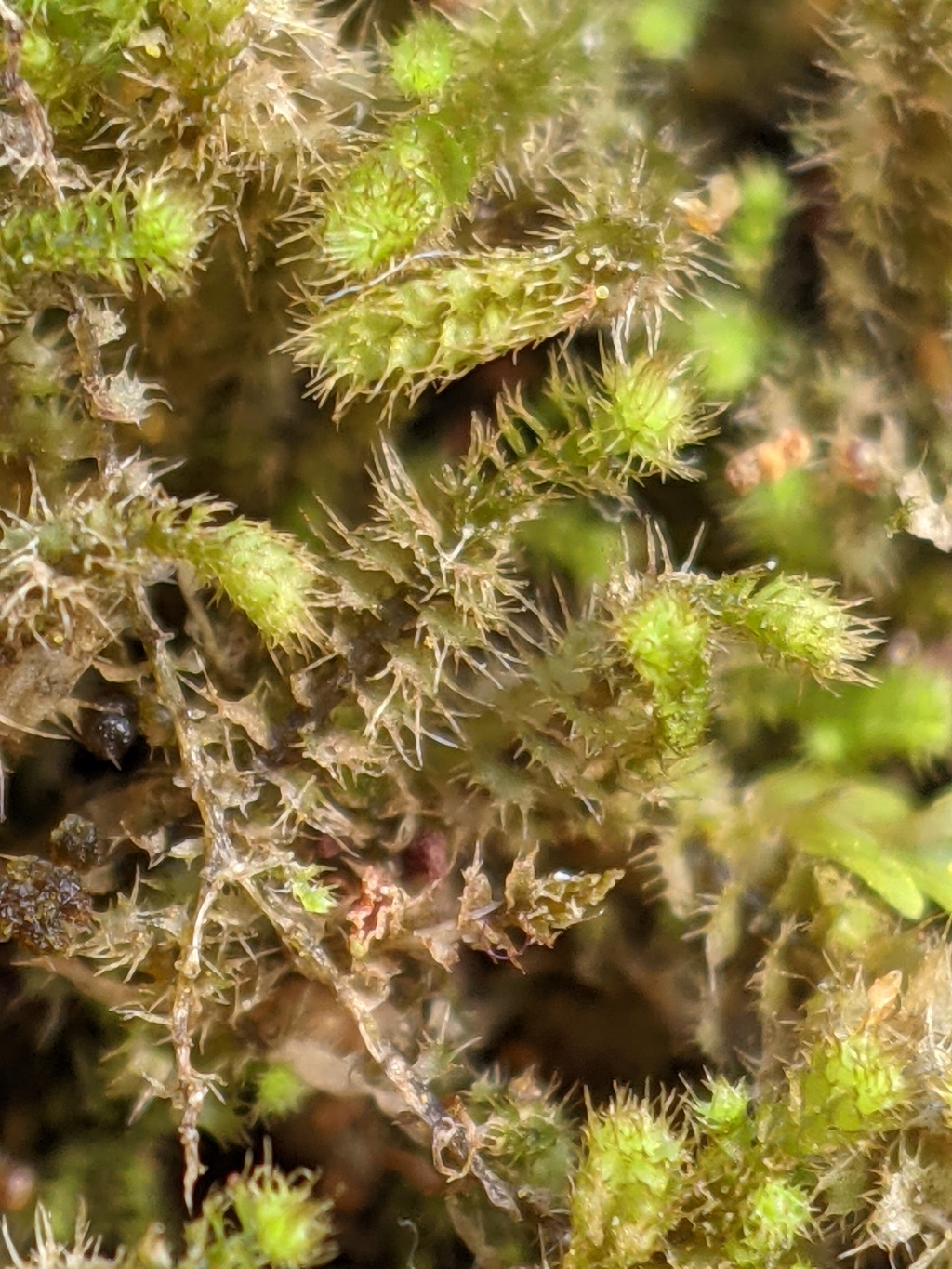Pseudolepicoleaceae
Terrestrial, lithophytic, or rarely epiphyllous (not in Victoria), dioicous. Asexual reproduction rarely by fragmenting leaf lobes (not in Victoria) and perianth cilia (not in Victoria). Stems sparingly and irregularly branched; branches arising from main stem abaxial or adaxial to modified lateral leaf with fewer lobes and without a collar of tissue at base, or from axils of modified underleaves with fewer lobes and without a collar of tissue at base, or rarely from axils of unmodified lateral leaves and without a collar of tissue at base (not in Victoria), or from near unmodified lateral leaves and underleaves (not in Victoria) and with a collar of tissue at base. Lateral leaves succubous, transverse (not in Victoria) or slightly incubous (not in Victoria), erect- to wide-spreading from stem, distant to imbricate, 4-lobed, often with additional and sometimes large and lobe-like teeth basal to lobes, cuneate to flabellate in outline, rarely unlobed and rotund (not in Victoria) or 2–3-lobed (not in Victoria), uni- or multi- (not in Victoria) stratose; lobes setaceous (not in Victoria) or triangular to lanceolate, entire, dentate or ciliate. Underleaves similar in form to lateral leaves, often slightly smaller than lateral leaves. Leaf cells polygonal to quadrate, often becoming oblong or rectangular in cilia and lobes, striolate, papillose, verrucose or smooth (not in Victoria), thin- or thick- (not in Victoria) walled, without or with (not in Victoria) conspicuous trigones, with 3–12 smooth or finely granulate globular, ellipsoid or ovoid oil bodies. Rhizoids in fascicles at underleaf bases, without internal peg-like thickenings, hyaline. Androecia on main stems or branches, with 1–7 pairs of concave-based bracts, each with 1–2 antheridia. Sporophytes terminal on main stems, developing within a perianth and shoot calyptra, sometimes also with a coelocaule precursor; perianth urceolate, cylindric or obloid, trigonous and with 3 or more plicae at least toward apex, wide open or closed (not in Victoria) at apex where ciliate or entire (not in Victoria), rarely ciliate on abaxial surface (not in Victoria). Capsules ovoid to ellipsoid, 2–5-stratose, dehiscing by 4 valves, remaining concealed within perianth; elaters present, uni- (not in Victoria) or bispiral. Spores globose, finely granular.
Twenty-six species in seven genera mostly occurring in southern South America and New Zealand, but also in the tropical Andes, Venezuela, Tristan da Cunha, India through to the tropical Pacific, and south-eastern Australia (Schuster 2000; Söderström et al. 2006); one genus with at least two species in Victoria.
Schuster, R.M. (2000). Austral Hepaticae Part I. Nova Hedwigia Beiheft 118. Cramer in der Gebrüder Borntraeger Verlagsbuchbehandlung: Berling & Stuttgart.
Söderström, L., Hagborg, A., von Konrat, M., Bartholomew-Began, S., Bell, D., Briscoe, L., Brown, E., Cargill, D.C., Costa, D.P., Crandall-Stotler, B.J., Cooper, E.D., Dauphin, G., Engel, J.J., Feldberg, K., Glenny, D., Gradstein, S.R., He, X., Heinrichs, J., Hentschel, J., Ilkiu-Borges, A.L., Katagiri, T., Konstantinova, N.A., Larraín, J., Long, D.G., Nebel, M., Pócs, T., Puche, F., Reiner-Drehwald, E., Renner, M.A.M., Sass-Gyarmati, A., Schäfer-Verwimp, A., Moragues, J.S., Stotler, R.E., Sukkharak, P., Thiers, B.M., Uribe, J., Váňa, J., Villarreal, J.C., Wigginton, M., Zhang, L. & Zhu, R. (2016). World checklist of hornworts and liverworts. Phytokeys 59: 1–828.
 Spinning
Spinning